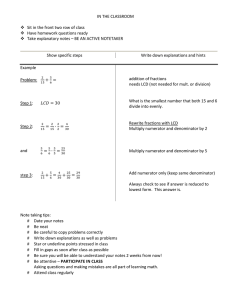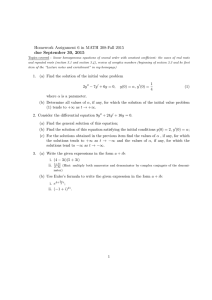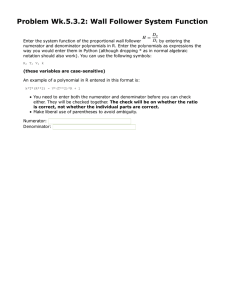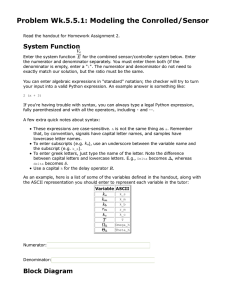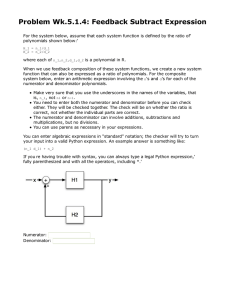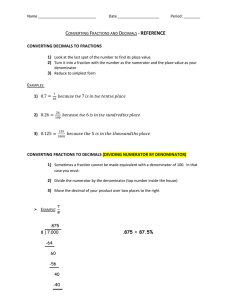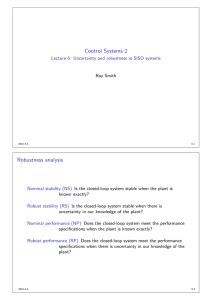ex5m7_12.doc
advertisement
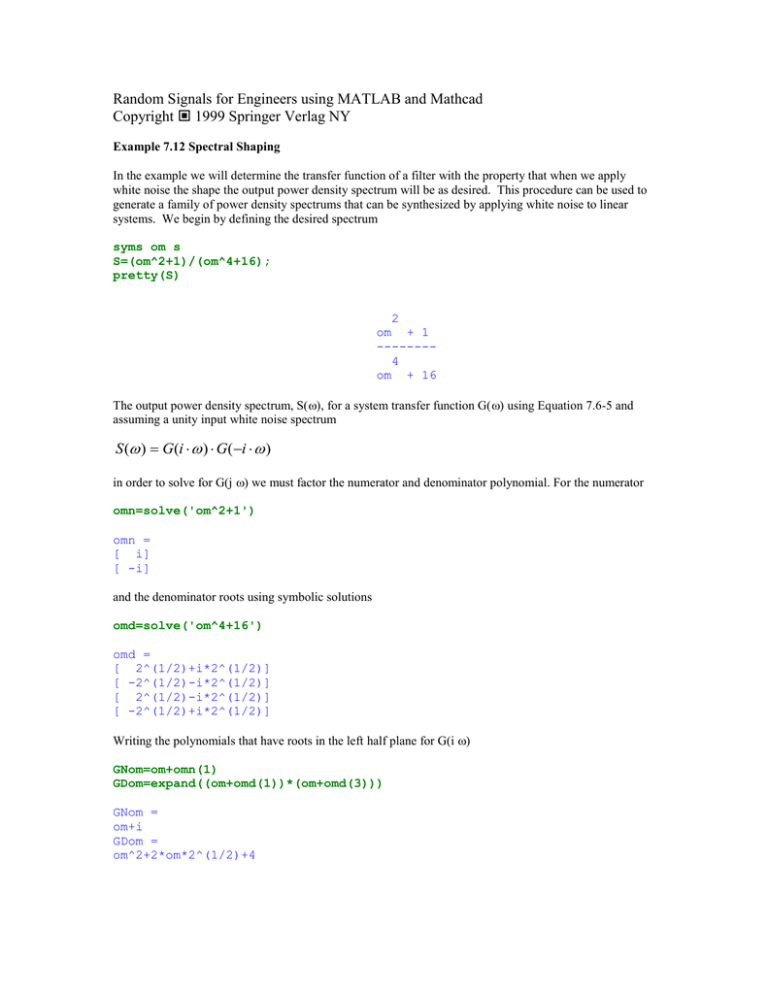
Random Signals for Engineers using MATLAB and Mathcad
Copyright 1999 Springer Verlag NY
Example 7.12 Spectral Shaping
In the example we will determine the transfer function of a filter with the property that when we apply
white noise the shape the output power density spectrum will be as desired. This procedure can be used to
generate a family of power density spectrums that can be synthesized by applying white noise to linear
systems. We begin by defining the desired spectrum
syms om s
S=(om^2+1)/(om^4+16);
pretty(S)
2
om + 1
-------4
om + 16
The output power density spectrum, S(), for a system transfer function G() using Equation 7.6-5 and
assuming a unity input white noise spectrum
S ( ) G(i ) G( i )
in order to solve for G(j ) we must factor the numerator and denominator polynomial. For the numerator
omn=solve('om^2+1')
omn =
[ i]
[ -i]
and the denominator roots using symbolic solutions
omd=solve('om^4+16')
omd =
[ 2^(1/2)+i*2^(1/2)]
[ -2^(1/2)-i*2^(1/2)]
[ 2^(1/2)-i*2^(1/2)]
[ -2^(1/2)+i*2^(1/2)]
Writing the polynomials that have roots in the left half plane for G(i )
GNom=om+omn(1)
GDom=expand((om+omd(1))*(om+omd(3)))
GNom =
om+i
GDom =
om^2+2*om*2^(1/2)+4
We have identity the numerator and denominator polynomial that belong to G(i ) and G(-i ). We take
the roots or poles and zeros of G(i ) in the left half plane corresponding to stable poles and non minimum phase zeros with G(s). We obtain
Gom=GNom/GDom;
pretty(Gom)
om + i
------------------2
1/2
om + 2 om 2
+ 4
and similarly with the minus sign need because the substitution must be made for i
Gomr=subs(Gom,om,-om);
pretty(-Gomr)
-om + i
- ------------------2
1/2
om - 2 om 2
+ 4
We may verify the result by computing G (i )
2
G (i ) G ( i )
simplify(expand(-Gom*Gomr))
ans =
(om^2+1)/(om^2+2*om*2^(1/2)+4)/(om^2-2*om*2^(1/2)+4)
num=expand((om^2+2*om*2^(1/2)+4)*(om^2-2*om*2^(1/2)+4))
num =
om^4+16
The last result was obtain by isolation the denominator and expanding the expression rather that the
complete term. This verifies the synthesis.

